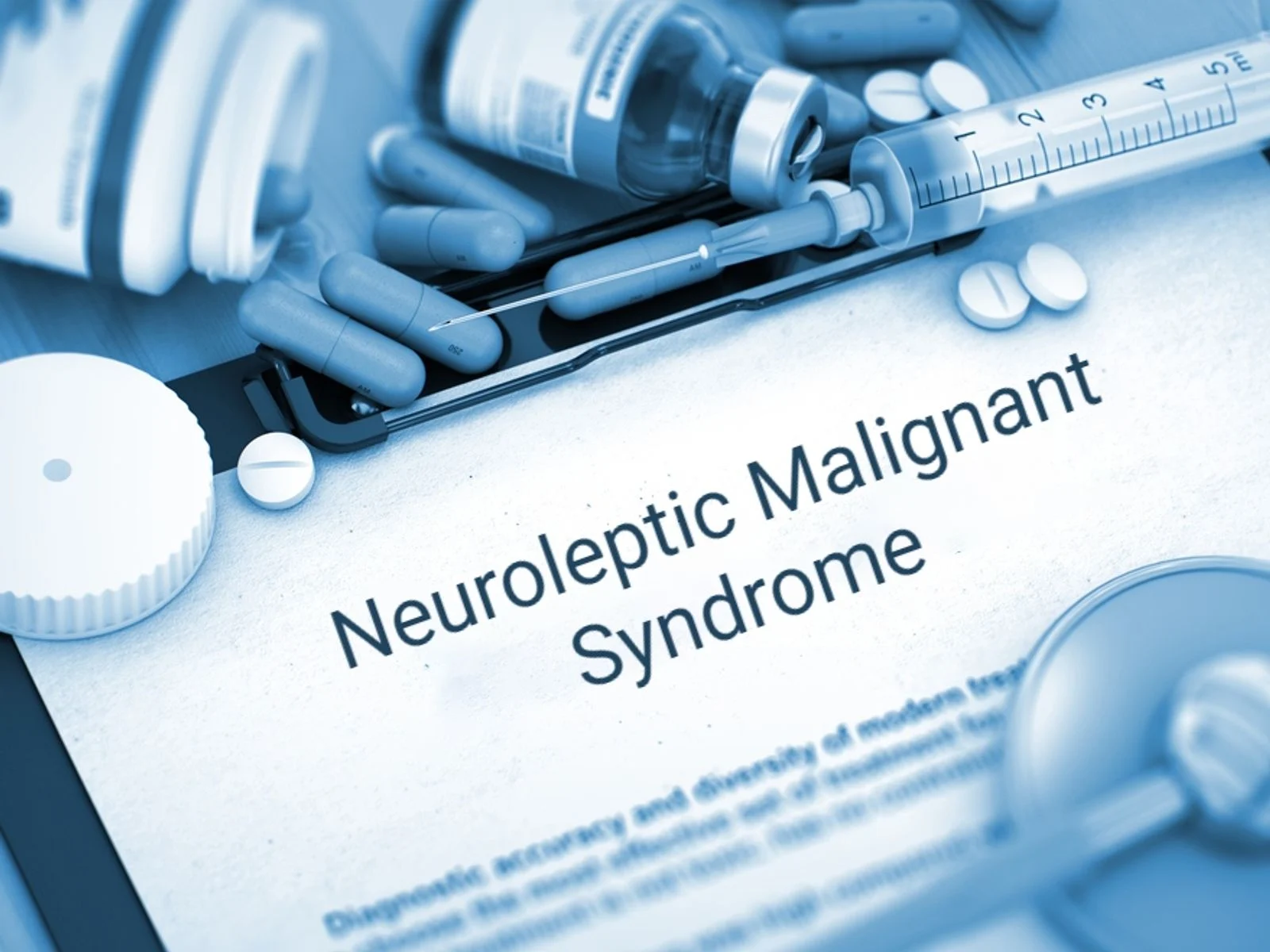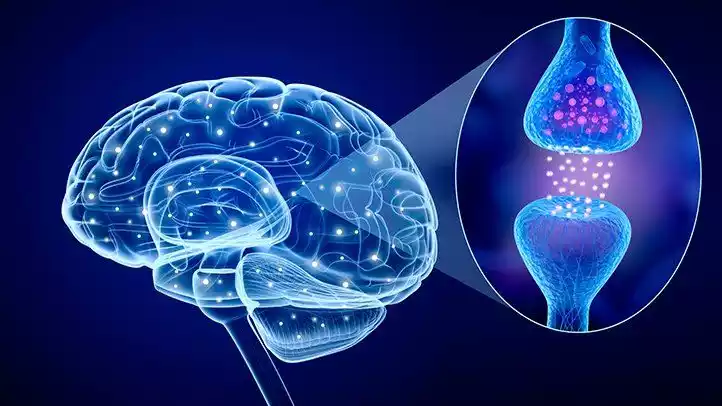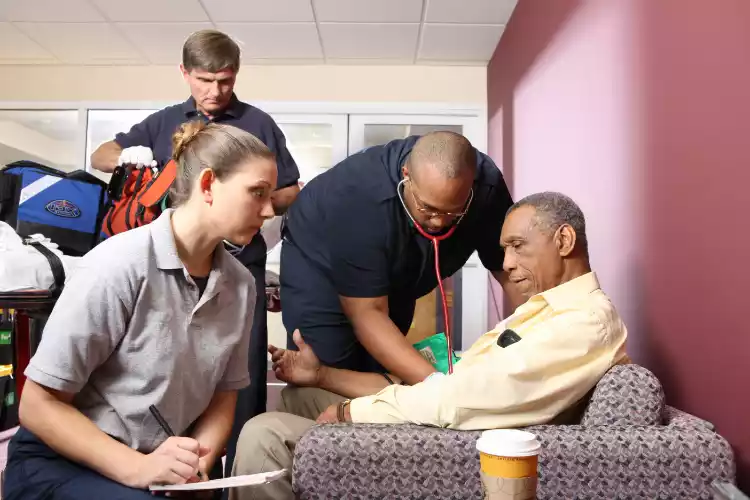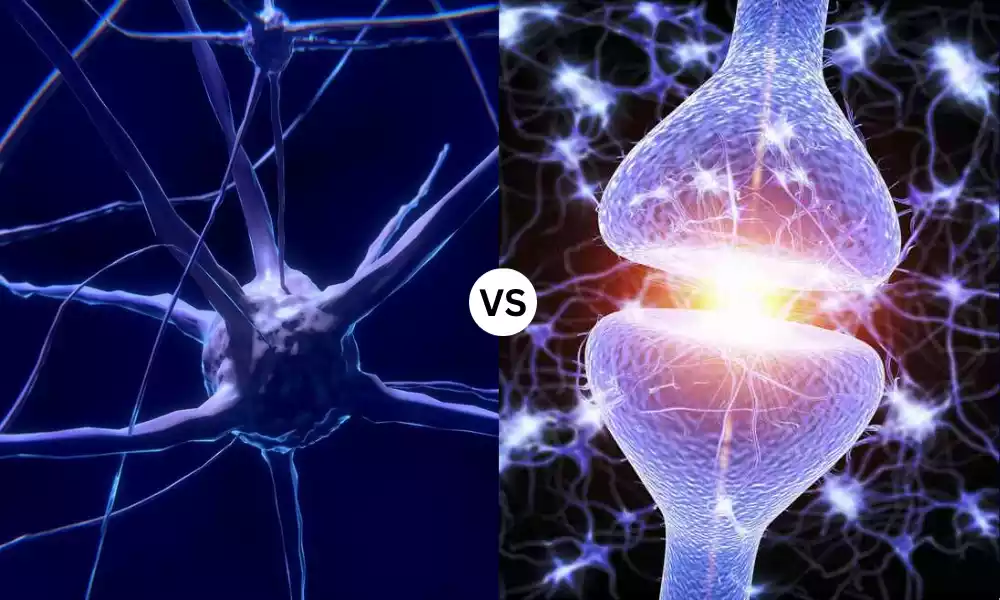Neuroleptic Malignant Syndrome and Serotonin Syndrome are two life-threatening neurological disorders primarily caused by medications. NMS is typically associated with antipsychotic drugs or the abrupt withdrawal of dopaminergic medications, characterized by muscle rigidity, fever, altered consciousness, and autonomic dysfunction. On the other hand, SS results from an excess of serotonergic activity in the central nervous system, often due to a combination of medications that increase serotonin levels.
Its presentation includes symptoms like neuromuscular hyperactivity, agitation, fever, and autonomic dysregulation. Both conditions necessitate prompt recognition and treatment to prevent severe complications.
Neuroleptic Malignant Syndrome
Neuroleptic Malignant Syndrome (NMS) is a rare but potentially life-threatening condition triggered mainly by the use of antipsychotic medications or the abrupt withdrawal of dopaminergic drugs. It is characterized by a combination of hyperthermia (elevated body temperature), severe muscle rigidity, altered mental status, and autonomic dysfunction (which can include unstable blood pressure, tachycardia, and irregularities in heart rhythm).

The underlying mechanism is believed to be related to the blockade of dopamine receptors in the brain, particularly in the basal ganglia and hypothalamus. Immediate medical attention is crucial for individuals presenting with NMS, as the condition can lead to severe complications or even death if not treated promptly.
Causes of Neuroleptic Malignant Syndrome
Neuroleptic Malignant Syndrome (NMS) is primarily associated with the use of antipsychotic medications and the abrupt withdrawal of dopaminergic agents. Here are the primary causes and risk factors:
- Antipsychotic Medications: Almost all antipsychotics, both typical (first-generation) and atypical (second-generation), have been associated with NMS. Some common examples include:
- Haloperidol (a typical antipsychotic)
- Risperidone, olanzapine, quetiapine, aripiprazole, and clozapine (atypical antipsychotics)
- Abrupt Withdrawal or Reduction of Dopaminergic Medications: This is especially observed in patients with Parkinson’s disease. Examples include:
- Levodopa
- Dopamine agonists like pramipexole and ropinirole
- Other Medications: Some other medications that are not primarily antipsychotics can also be associated with NMS. These include:
- Metoclopramide (used for gastroparesis and nausea)
- Promethazine (used for nausea and as an antihistamine)
- Risk Factors:
- Rapid Titration: Rapidly increasing the dose of antipsychotic medications can elevate the risk.
- Dehydration: Individuals who are dehydrated might be at an increased risk.
- Physical Agitation: Recent episodes of physical agitation or being subjected to physical restraints can predispose an individual to NMS.
- Organic Brain Disorders: Conditions like traumatic brain injuries or other brain disorders might increase the risk.
- Concomitant use of Lithium: While lithium by itself is not a known direct cause of NMS, its concurrent use with antipsychotics might increase the risk.
- Other Considerations:
- It’s essential to note that while NMS is primarily associated with drug use, the exact cause remains multifactorial. Not every patient taking these medications will develop NMS.
- The syndrome can develop after just a single dose of an antipsychotic or after long-term therapy, although it’s more common shortly after initiating therapy or increasing the dose.
Immediate attention and medical intervention are crucial if NMS is suspected, given its potential severity and life-threatening complications.
Symptoms of Neuroleptic Malignant Syndrome
Neuroleptic Malignant Syndrome (NMS) is a potentially life-threatening condition, and its symptoms generally develop over a period of days, though acute onset within hours is also possible. Recognizing the symptoms early is crucial for timely intervention and management. Here are the primary symptoms associated with NMS:
- Hyperthermia: Elevated body temperature, often above 38.5°C (101.3°F), is one of the most characteristic symptoms of NMS. Fever can be as high as 40°C (104°F) or more in severe cases.
- Muscle Rigidity: Patients often present with generalized muscle stiffness or “lead-pipe rigidity,” especially in the upper extremities.
- Altered Mental Status: This can range from agitation and confusion to lethargy and coma.
- Autonomic Dysregulation: This includes a variety of symptoms such as:
- Tachycardia (rapid heart rate)
- Blood pressure fluctuations (either hypertension or hypotension)
- Diaphoresis (excessive sweating)
- Pallor (pale appearance)
- Salivation
- Tachypnea (rapid breathing)
- Tremor: Unlike Parkinson’s disease, tremor is usually not a prominent feature of NMS. However, some patients may exhibit a tremulous movement.
- Other symptoms:
- Elevated levels of creatine kinase (CK) in the blood due to muscle breakdown (rhabdomyolysis).
- Acute renal failure secondary to rhabdomyolysis.
- Reduced or absent reflexes.
- Dysphagia (difficulty swallowing).
- Dysarthria (difficulty speaking).
- Incontinence.
- Laboratory Findings:
- Leukocytosis (elevated white blood cell count)
- Elevated liver enzymes
- Metabolic acidosis (can be present in severe cases)
It’s crucial to differentiate NMS from other conditions that might present similarly, such as serotonin syndrome, malignant hyperthermia, and anticholinergic toxicity, among others. If someone is suspected of having NMS, they should receive immediate medical attention.
Serotonin Syndrome
Serotonin Syndrome (SS) is a potentially life-threatening condition resulting from an excessive accumulation of serotonin in the central nervous system. It’s primarily caused by the use or overdose of serotonergic drugs, especially in combination. The syndrome is characterized by a triad of neuromuscular hyperactivity (such as tremor and muscle rigidity), autonomic dysregulation (like elevated heart rate and fluctuating blood pressure), and altered mental status (e.g., agitation or confusion).

The severity of symptoms can range from mild to severe, and in extreme cases, it can be fatal. Immediate medical attention and discontinuation of the offending agents are essential for managing this condition.
Causes of Serotonin Syndrome
Serotonin Syndrome (SS) is primarily caused by drugs that increase serotonin levels in the central nervous system. Here are the main causes and contributing factors:
- Selective Serotonin Reuptake Inhibitors (SSRIs): These are commonly prescribed antidepressants. Examples include:
- Fluoxetine (Prozac)
- Sertraline (Zoloft)
- Paroxetine (Paxil)
- Citalopram (Celexa)
- Escitalopram (Lexapro)
- Serotonin-Norepinephrine Reuptake Inhibitors (SNRIs): Another class of antidepressants. Examples include:
- Duloxetine (Cymbalta)
- Venlafaxine (Effexor XR)
- Monoamine Oxidase Inhibitors (MAOIs): A type of antidepressant less commonly used today because of its interaction potential. Examples include:
- Phenelzine (Nardil)
- Tranylcypromine (Parnate)
- Isocarboxazid (Marplan)
- Tricyclic Antidepressants (TCAs): Older class of antidepressants. Examples include:
- Amitriptyline
- Nortriptyline
- Triptans: Used for migraine treatment. Examples include:
- Sumatriptan (Imitrex)
- Zolmitriptan (Zomig)
- Recreational Drugs:
- MDMA (Ecstasy)
- LSD
- Cocaine
- Other Medications and Supplements:
- Dextromethorphan (found in many over-the-counter cough preparations)
- Lithium
- Meperidine (Demerol)
- Tramadol
- Methadone
- St. John’s Wort (a herbal supplement)
- L-tryptophan (a dietary supplement)
- Buspirone
- Combination of Serotonergic Agents: SS is more likely to occur when two or more serotonergic drugs are taken together, especially if one or both are introduced or increased in dosage recently.
- Other Considerations:
- Overdose of a serotonergic medication can precipitate SS.
- Starting a new medication or increasing the dose of an existing serotonergic medication can elevate the risk.
Recognizing the potential drug interactions and monitoring for signs and symptoms of SS is crucial, especially when initiating or changing dosages of medications that influence serotonin levels. If someone is suspected of having SS, they should seek medical attention immediately.
Symptoms of Serotonin Syndrome
Serotonin Syndrome (SS) is characterized by a spectrum of clinical findings, which can range from mild to severe. The symptoms typically manifest within hours after an increased serotonergic activity, such as after starting or increasing the dosage of a serotonergic drug. Here are the primary symptoms associated with SS:
- Neuromuscular Hyperactivity:
- Tremor
- Muscle rigidity
- Myoclonus (sudden, involuntary muscle jerks)
- Hyperreflexia (exaggerated reflexes), especially in the lower extremities
- In severe cases, muscle breakdown (rhabdomyolysis) can occur
- Autonomic Dysregulation:
- Tachycardia (rapid heart rate)
- Hypertension (elevated blood pressure), which can fluctuate and lead to hypotension
- Diaphoresis (excessive sweating)
- Dilated pupils (mydriasis)
- Fever (temperature elevation, which can be significant in severe cases)
- Diarrhea
- Shivering
- Altered Mental Status:
- Agitation
- Delirium or confusion
- Hypomania
- Hallucinations
- Coma in severe cases
- Other symptoms:
- Nausea and vomiting
- Incoordination or ataxia
- Overactive bowel sounds
- Rapid breathing or tachypnea
The severity of symptoms can vary widely among individuals and is partly dependent on the amount and combination of serotonergic agents involved. Mild symptoms might resolve with the discontinuation of the serotonergic agent and supportive care. However, severe cases, characterized by high fever, irregular heartbeat, seizures, and loss of consciousness, require immediate medical attention and can be life-threatening.
Comparison table of Neuroleptic Malignant Syndrome and Serotonin Syndrome
Here’s a comparison table of Neuroleptic Malignant Syndrome (NMS) and Serotonin Syndrome (SS):
| Feature | Neuroleptic Malignant Syndrome (NMS) | Serotonin Syndrome (SS) |
|---|---|---|
| Cause | Most commonly associated with antipsychotic medications and abrupt withdrawal of dopaminergic drugs. | Most often due to serotonergic drugs, especially when combined or overdosed. |
| Onset | Typically gradual, developing over days. | Rapid, often within hours of drug ingestion or dosage change. |
| Muscle Symptoms | Severe muscle rigidity (lead-pipe rigidity). | Tremor, myoclonus, hyperreflexia. Muscle rigidity can also be present but often less pronounced than in NMS. |
| Temperature | Hyperthermia; high fever is a cardinal sign. | Elevated temperature, which can be extreme in severe cases. |
| Mental Status | Altered consciousness, which can range from confusion to coma. | Agitation, confusion, hypomania, hallucinations. |
| Autonomic Symptoms | Tachycardia, blood pressure fluctuations, diaphoresis, pallor. | Tachycardia, blood pressure changes, diaphoresis, mydriasis (dilated pupils), diarrhea, shivering. |
| Other Symptoms | Elevated creatine kinase (from muscle breakdown), acute renal failure, reduced or absent reflexes. | Nausea, vomiting, incoordination, overactive bowel sounds. |
| Treatment | Discontinuation of the offending drug, supportive care, dantrolene or bromocriptine in some cases. | Discontinuation of the offending drug, supportive care, benzodiazepines for agitation, cyproheptadine (a serotonin antagonist) in some cases. |
It’s crucial to recognize and differentiate between these two syndromes, as they have different treatments and potential complications. Both conditions require immediate medical attention.
How to Diagnosis of Neuroleptic Malignant Syndrome and Serotonin Syndrome
Diagnosis of both Neuroleptic Malignant Syndrome (NMS) and Serotonin Syndrome (SS) is largely clinical, based on symptom presentation, physical examination, and patient history, especially regarding recent medication use or changes in dosage. There isn’t a definitive laboratory test to diagnose either syndrome, but some tests can aid in the diagnosis and rule out other potential conditions.

Neuroleptic Malignant Syndrome (NMS):
- Clinical Features: The key clinical features are hyperthermia, muscle rigidity, altered mental status, and autonomic dysregulation.
- History: Recent start, change, or stoppage of an antipsychotic medication or dopaminergic drug.
- Laboratory Tests:
- Elevated Creatine Kinase (CK): Indicates muscle breakdown.
- Leukocytosis: Elevated white blood cell count.
- Elevated Liver Enzymes: Can be seen in some cases.
- Renal Insufficiency: Due to muscle breakdown and rhabdomyolysis.
- Metabolic Acidosis: Can be present in severe cases.
- Exclusion of Other Causes: It’s vital to exclude other potential causes of the patient’s symptoms, such as infections, other drug effects, or metabolic abnormalities.
Serotonin Syndrome (SS):
- Clinical Features: The main features include neuromuscular hyperactivity (tremor, muscle rigidity, myoclonus, hyperreflexia), autonomic dysregulation (elevated heart rate, fluctuating blood pressure, sweating, diarrhea, shivering), and altered mental status (agitation, confusion).
- History: Recent use, dosage increase, or combination of serotonergic drugs.
- Laboratory Tests: While no lab test confirms SS, tests can help rule out other conditions and assess the severity.
- Complete Blood Count (CBC): To rule out infection.
- Electrolytes and Metabolic Panel: To assess for metabolic abnormalities.
- Creatine Kinase (CK): Can be elevated due to muscle activity but typically less than in NMS.
- Urine Drug Screen: To check for potential intoxicating substances that can cause similar symptoms.
- Hunter Serotonin Toxicity Criteria: A set of diagnostic criteria that, if met, makes SS more likely. The criteria include:
- Recent addition or increase of a known serotonergic agent to the patient’s regimen.
- Absence of other possible etiologies (such as infection, substance intoxication, withdrawal).
- No recent addition or increase of a neuroleptic agent.
- At least one of the following: spontaneous clonus, inducible clonus plus agitation or diaphoresis, ocular clonus plus agitation or diaphoresis, tremor plus hyperreflexia, hypertonia, or a temperature above 38°C plus ocular or inducible clonus.
When suspecting either NMS or SS, it’s essential to act promptly, as both conditions can be life-threatening.
Treatment Approaches
Both Neuroleptic Malignant Syndrome (NMS) and Serotonin Syndrome (SS) are medical emergencies. Their treatment primarily focuses on discontinuing the causative agents, providing supportive care, and in certain situations, administering specific pharmacologic treatments. Here’s an overview of the treatment approaches for both:
Neuroleptic Malignant Syndrome (NMS)
- Discontinue Offending Medication: Immediately stop the antipsychotic or other medication believed to be causing NMS.
- Supportive Care:
- Cooling Measures: Given that hyperthermia is a major symptom, external cooling with fans, cooling blankets, and ice packs can be beneficial.
- Hydration: Ensure adequate hydration to prevent kidney damage from rhabdomyolysis.
- Electrolyte Management: Monitor and correct any electrolyte abnormalities.
- Pharmacologic Interventions:
- Dantrolene: A muscle relaxant that can help reduce muscle rigidity and hyperthermia.
- Bromocriptine: A dopamine agonist that can be beneficial in some cases.
- Monitor and Support Other Organ Systems: Monitor renal function, and treat any secondary complications such as respiratory failure or arrhythmias.
Serotonin Syndrome (SS)
- Discontinue Offending Medication: Cease the serotonergic drug(s) believed to be the cause immediately.
- Supportive Care:
- Cooling Measures: For patients with hyperthermia.
- Fluids: Ensure adequate hydration.
- Control of Agitation: Use of sedatives, typically benzodiazepines like diazepam or lorazepam, can help control severe agitation.
- Blood Pressure Management: Administer antihypertensive or vasopressor medications as needed, depending on the patient’s blood pressure.
- Pharmacologic Interventions:
- Cyproheptadine: An antihistamine with antiserotonergic properties that can be beneficial in treating SS. It’s administered orally, so it may not be suitable for patients who are very agitated or those with altered consciousness.
- Monitor and Support Other Organ Systems: Particularly the cardiovascular and respiratory systems.
- Avoid Drugs that Aggravate the Condition: Do not administer additional serotonergic agents or drugs like MAOIs.
- Serotonin Antagonists: In some severe cases, specific serotonin receptor antagonists can be considered, but their use isn’t universally agreed upon.
It’s crucial to remember that early recognition and intervention are paramount for both syndromes. Depending on the severity and the specific clinical scenario, hospitalization may be necessary, with severe cases requiring intensive care unit (ICU) admission. Always seek emergency medical attention if NMS or SS is suspected.
Prevention Strategies of Neuroleptic Malignant Syndrome and Serotonin Syndrome
Prevention is essential for both Neuroleptic Malignant Syndrome (NMS) and Serotonin Syndrome (SS) because of their potential severity. Here are prevention strategies tailored for each:
Neuroleptic Malignant Syndrome (NMS):
- Start Low and Go Slow: When initiating or switching antipsychotic medications, begin with the lowest effective dose and gradually increase as necessary.
- Patient Education: Inform patients and caregivers about the symptoms of NMS so that they can recognize them early and seek medical attention.
- Rechallenge with Caution: If a patient has had NMS in the past, be very cautious when reintroducing antipsychotic medications. Some experts recommend avoiding them altogether.
- Avoid Abrupt Withdrawal: Don’t abruptly withdraw medications that have dopaminergic effects, especially in Parkinson’s disease, as this can precipitate NMS.
- Monitor High-Risk Patients: Patients with dehydration, acute physical illness, or those concurrently receiving other medications known to reduce the seizure threshold might be at higher risk.
- Regular Monitoring: Regularly monitor patients taking antipsychotic medications, especially during the initial phase or after dosage changes.
Serotonin Syndrome (SS):
- Medication Review: Before starting any new medication, especially an antidepressant, review all current medications, over-the-counter drugs, and supplements the patient is taking to avoid combinations that could increase serotonin.
- Educate Patients: Ensure patients are aware of the symptoms of SS and emphasize the importance of taking medications as prescribed without making any changes without discussing with a healthcare provider.
- Avoidance in Known Cases: In individuals who have previously experienced SS, avoid reintroducing the causative drug and be cautious with other serotonergic agents.
- Clear Communication: Ensure clear communication among all healthcare providers involved in a patient’s care, so everyone is aware of the medications the patient is on.
- Use of MAOIs: If a patient is on a Monoamine Oxidase Inhibitor (MAOI) or has recently stopped one, be cautious with other serotonergic drugs due to the heightened risk. Typically, there should be a washout period when switching between MAOIs and other serotonergic agents.
- Tapering: When discontinuing serotonergic drugs, consider tapering them (under medical guidance) rather than stopping abruptly, to reduce any risks associated with withdrawal or imbalances.
- Dose Adjustments: If increasing the dosage of a serotonergic drug, do it gradually, monitoring for any signs or symptoms of SS.
Preventing NMS and SS largely revolves around vigilance, patient education, and cautious prescribing. It’s crucial to remain aware of the potential interactions and risks associated with the vast array of medications that can precipitate these syndromes.
Conclusion
Neuroleptic Malignant Syndrome (NMS) and Serotonin Syndrome (SS) are serious, potentially life-threatening conditions most often triggered by medications that affect the central nervous system. NMS typically arises from antipsychotic drugs or abrupt withdrawal of dopaminergic agents, while SS is usually precipitated by serotonergic medications, especially when combined or overdosed.
Both syndromes present with a constellation of neuromuscular, autonomic, and mental status changes, but each has distinct features. Early recognition, immediate discontinuation of the causative drug(s), and prompt medical intervention are crucial for favorable outcomes. Preventative strategies, including cautious prescribing, patient education, and regular monitoring, play an essential role in mitigating the risks associated with these conditions.



